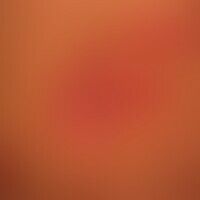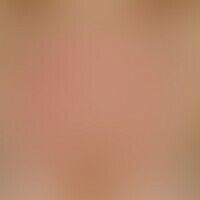Image diagnoses for "Torso", "Plaque (raised surface > 1cm)", "red"
205 results with 655 images
Results forTorsoPlaque (raised surface > 1cm)red
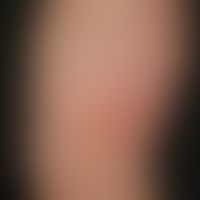
Adult onset still disease M06.1
Still Syndrome adultes: maculo-papular (sometimes urticarial aspect) exanthema in 53-year-old patient with recurrent fever attacks, distinct feeling of illness, arthralgias, relevantly increased inflammatory parameters, negative ANA and rheumatoid factor; no monoclonal gammopathy (DD: Schnitzler Syndrome)
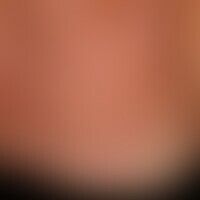
Dress T88.7
DRESS: Detailed picture. 4 weeks after taking carbemazepine, occurrence of this generalized maculo-papular exanthema.

Angry back T78.8
Angry back: Multiple "false positive" and clinically irrelevant test reactions in epicutaneous testing. 48h reading.
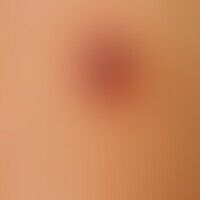
Nevus melanocytic dysplastic D48.5
Nevus, melanocytic, dysplastic. 1.5 x 0.8 cm in size, differently structured, multicoloured melanocytic nevus, with a blurred brown soft brown papule in the centre, surrounded by a ring-shaped, reddish-brownish plaque.

Lupus erythematosus tumidus L93.2
Lupus erythermatodes tumidus:recurrent disease patternforseveral years. no itching, no other subjective complaints. significant improvement of symptoms after treatment with antimalarials.

Contact dermatitis allergic L23.0
Pronounced. large-area allergic contact eczema: large, blurred (scattered edges), itchy, red, rough, scaly plaques that have existedfor 4 weeks.

Atopic dermatitis in children and adolescents L20.8
Eczema atopic in child/adolescent: 12-year-old child; acute episode of the previously known atopic eczema with vesicular, occasionally also pustular plaques.

Lupus erythematosus (overview) L93.-
Rowell's Syndrome: Erythema exudativum multiforme-like exanthema in "subacute cutaneous lupus erythematosus
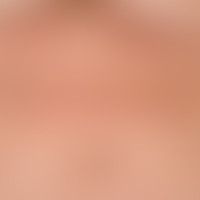
Dyskeratosis follicularis Q82.8
dyskeratosis follicularis. presentation of multiple, chronically stationary, disseminated, red nbis rfot-brown papules localized in the submammary and upper abdomen. in these areas strong increase of skin changes, especially in summer with increased sweating.

Microsphere B35.0
Microspore: multicenter, acute, since 4 weeks existing, increasing, initially 0.2-0.3 cm large, later due to size increase and confluence up to 10 cm large, blurred, strongly itchy, red, rough plaques (scaling, crusts); highly contagious special form of Tinea corporis due to microsporum species.

Contact dermatitis toxic L24.-
Contact dermatitis, toxic: Severe, not quite fresh, painful dermatitis after application of an ointment containing dithranol.
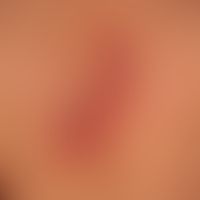
Basal cell carcinoma (overview) C44.-
Basal cell carcinoma superficial: slowly growing, symptom-free red plaque with crusty edges, which has been present for several years.

Psoriasis (Übersicht) L40.-
Psoriasis: Gutta type with acutely opened, small-focus formations, weeping scale superimpositions in the area of the periumbilical plaques.
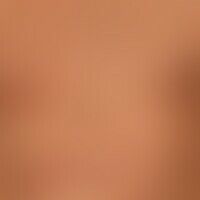
Lupus erythematosus acute-cutaneous L93.1
lupus erythematosus acute-cutaneous: clinical picture known for several years, occurring within 14 days, at the time of admission still with intermittent course. anular pattern. in the current intermittent phase fatigue and exhaustion. ANA 1:160; anti-Ro/SSA antibodies positive. DIF: LE - typical.

Pityriasis rosea L42
Pityriasis rosea: discreet macular or plaque-shaped exanthema with tender red spots and plaques arranged in the cleft lines.

Mycosis fungoides C84.0
Special form: Mycosis fungoides, folliculotropic. 3-year-old clinical picture with strongly itchy, moderately sharply defined, follicular red plaques. secondary findings: multiple melanocytic nevi.





